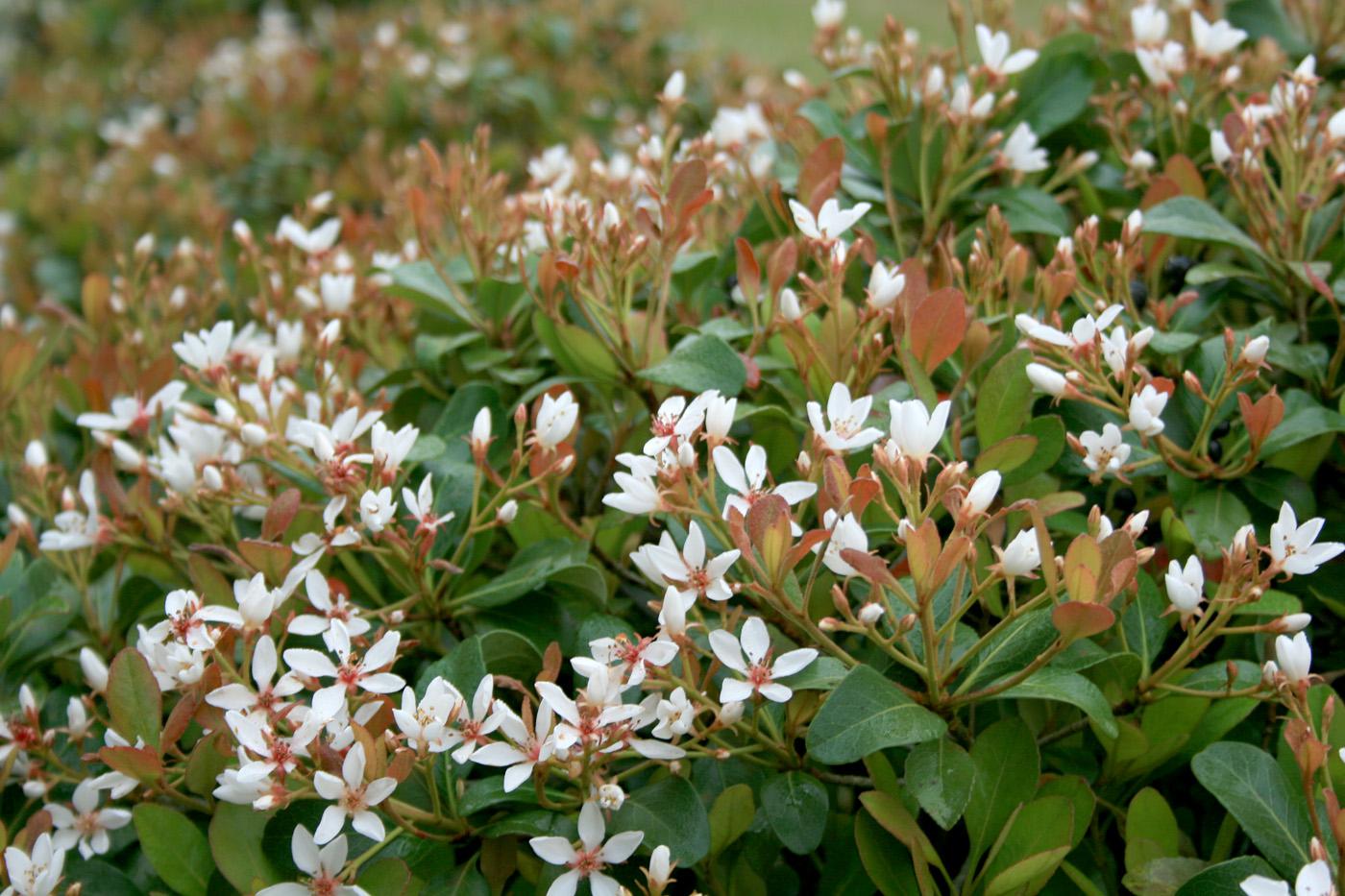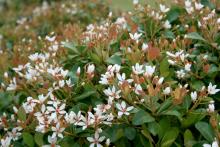Information Possibly Outdated
The information presented on this page was originally released on February 27, 2012. It may not be outdated, but please search our site for more current information. If you plan to quote or reference this information in a publication, please check with the Extension specialist or author before proceeding.
Indian hawthorns bring spring blooms to yards
As springtime arrives across Mississippi, azaleas are starting to put on their colorful show. While these walls of pink and clusters of red and spots of white are well-known and anticipated, a spring-blooming shrub that does not get as much attention is the Indian hawthorn.
Indian hawthorn is one of those hard-working shrubs that anchor many foundation plantings around our homes and landscapes. This shrub is one of the tough plants that will tolerate a wide variety of landscape conditions. It is used as a mainstay in many commercial landscapes and other low-maintenance locations.
It is precisely these attributes that make it perhaps the perfect evergreen shrub to plant in your home landscape. Indian hawthorn is hardy in zones 7a through 10.
The fact that Indian hawthorn has multi-season interest only adds to the reasons to plant it in your landscape.
In the spring, star-shaped flowers emerge in clusters held loosely at the ends of branches. Flower colors range from snow white to light pastel pink. On calm springs days, you may be rewarded by catching a hint of their delicate floral fragrance when you stroll by a hedge in bloom. The center structures -- pistil and stamens -- are reddish, and these match the color of the newly unfolding foliage, adding contrast to the flower color.
Indian hawthorn produce fruit that are an attractive blue to black color. These ripen in the late summer and fall and will persist through the winter months. These berries are a good food source for many wildlife species.
The shrub’s evergreen foliage is thick and leathery to the touch. The top of the foliage is a lustrous dark green in the summer months, and when exposed to colder winter temperatures, it can turn a purplish-blue-green. The leaf margins have soft serrated edges that are highly variable.
Indian hawthorn is easily kept less than 3 feet tall in the landscape. The shrub tolerates pruning especially well, but always wait to shape it after the bloom period in the spring.
Plant Indian hawthorn in full sun to partial shade conditions. It prefers a consistently moist but well-drained landscape bed. To help ensure adequate drainage, plant the crown 1 or 2 inches above the soil level for the best landscape performance.
While most Indian hawthorns are small landscape shrubs in the 3-foot range, there is a bigger selection I’m really excited about. Rosalinda Indian hawthorn is promoted through the Southern Living Plant Collection. It is a large plant that can grow up to about 15 feet if left unpruned.
Selections I have seen have been trained as tree forms, and the bright pink flowers are a welcome sight in the late spring and early summer. Rosalinda is a little more sensitive to cold winter temperatures. It is hardy in zones 8 through 10, so this is better suited to the lower half of Mississippi.
So if your landscape needs a boost from spring-blooming shrubs, consider Indian hawthorn selections when you go shopping at the local garden center.








